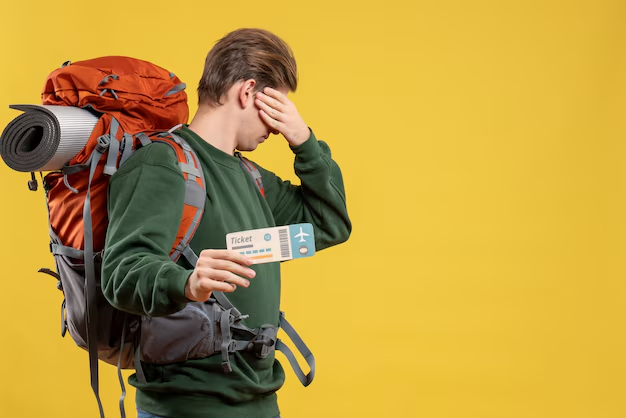Discover the Art of Traveling Light: Top Tips for Budget Backpacking
Embarking on a backpacking adventure is an exhilarating journey filled with opportunities to explore new cultures, meet fascinating people, and immerse yourself in the beauty of the natural world. But for many, the art of traveling light while maintaining a tight budget poses a unique challenge. Fear not! In this guide, we will delve into the essentials of minimalist backpacking, equipping you with the knowledge and strategies needed to travel smartly and economically.
Why Choose Minimalist Backpacking?
Backpacking as a minimalist combines the thrill of exploration with the discipline of careful planning and simplicity. Advantages of this traveling style include:
- Cost-Effectiveness: Prioritizing essential items and experiences without unnecessary expenses.
- Freedom: With less baggage, you're more flexible in choosing transport options or spontaneous trips.
- Sustainable Traveling: Consuming less and making deliberate choices reduces your carbon footprint.
Understanding Your Budget
Creating a budget is the cornerstone of any successful backpacking venture, especially for the minimalist traveler. Here’s how to do it:
- Determine Daily Expenses: This should include accommodation, food, transportation, and activities.
- Plan for Unexpected Costs: Always set aside funds for emergencies or spontaneous experiences.
- Track Your Spending: Keep a journal or use budget-tracking apps to monitor and control your expenses.
Packing Essentials for the Minimalist
Packing light is essential for both mobility and cost savings. Focus on these key categories when preparing your bag:
Clothing
- Versatile Clothing: Choose items that can be mixed and matched, such as neutral colors and lightweight materials.
- Season-Appropriate Gear: Research the climate of your destination and pack accordingly, layering is your friend!
- Footwear: One pair of sturdy walking shoes and a pair of casual flip-flops or sandals.
Toiletries and First Aid
- Travel-Sized Essentials: Shampoo, soap, toothpaste, all in small recyclable containers.
- Multi-Purpose Products: Opt for items like a shampoo and body wash combination.
- Basic First Aid Kit: Band-aids, antiseptic wipes, and any necessary personal medication.
Gadgets and Tools
- Portable Charger: A must for keeping your devices powered on long journeys.
- Universal Adapter: To ensure your chargers work in any part of the world.
- Utility Knife: Handy for cutting fruit, opening packages, and emergencies.
Accommodation Choices for Budget Travelers
Finding affordable accommodation is a key element of budget backpacking. Consider these options:
- Hostels: Ideal for meeting other travelers and located in central areas.
- Guesthouses or Homestays: Offer a local experience often at a lower cost than hotels.
- Camping: For the truly adventurous, it’s a great way to connect with nature and save money.
Eating On the Cheap
Experiencing local cuisine is a highlight of any travel experience, and it doesn’t have to break the bank:
- Street Food: Often both authentic and affordable.
- Groceries: Buying your own food from local markets can save money and allow for picnics in beautiful locations.
- Cook Your Own Meals: Consider staying in places with kitchen facilities to make simple meals.
Transportation Hacks
Transportation costs can quickly add up, but there are ways to keep them in check:
- Local Public Transport: Usually cheaper than taxis or rental cars.
- Overnight Trains/Buses: Save on accommodation by traveling overnight.
- Travel Passes: Many cities offer travel passes that reduce the cost of metro systems or buses.
Engaging in Low-Cost Activities
Get creative with how you spend your days. Here are some ideas for affordable yet enriching activities:
Explore Nature
- Hiking: Enjoy trails and parks free from admission fees.
- Beaches/Rivers/Lakes: Relax and enjoy what nature has to offer without an entry price.
Embrace Culture
- Free Museums and Exhibits: Many locations offer free entry on certain days.
- Walking Tours: Free walking tours are common in many cities, with local guides providing insights in exchange for a tip.
- Community Events: Check out local calendars for free events or festivals.
📝 Minimalist Backpacking Quick Tips
To encapsulate the above detailed strategies, here's a concise list for the minimalist traveler:
- 🎒 Pack Smart: Prioritize multi-use items and keep it light.
- 🏠 Affordable Stays: Explore hostels and homestays.
- 🍜 Eat Local: Embrace street food and markets.
- 🚍 Transport Economically: Use local transport and consider travel passes.
- 🏞️ Enjoy Nature: Opt for free hiking and parks.
- 🧩 Cultural Immersion: Tap into free or low-cost cultural experiences.
Final Word: Embrace the Minimalist Ethos
Embracing a minimalist approach to backpacking on a budget is not just about saving money; it's about creating a more authentic, engaging travel experience. By stripping away the superfluous, you open yourself up to a world of intrapersonal connections, personal growth, and cultural appreciation.
The goal is not only to see the world but to experience it fully and profoundly, allowing moments to define your journey rather than material possessions. With this guide, you're equipped to embark on a journey that is as much about self-discovery as it is about discovering new locales. Happy travels! 🌍

Related Topics
- A Comprehensive Guide To Community Cooperative Childcare: A Grassroots Solution
- A Guide To Online Second-Hand Shopping: Platforms, Tips, And Tricks
- Affordable After-School Programs And Clubs: A Complete Guide
- Affordable Group Therapy: Benefits And How To Find
- Affordable Natural Therapies For Mental Well-being
- Avoiding Financial Scams And Pitfalls: A Comprehensive Guide
- Beginners Guide To Thrifting: Stretching Your Dollar Further
- Beyond Clothing: Thrifty Finds For Home And Kitchen
- Budget-friendly Garden Start-ups: From Seeds To Harvest
- Budget-Friendly Wall Fixes: Dealing With Dings, Dents, And Marks